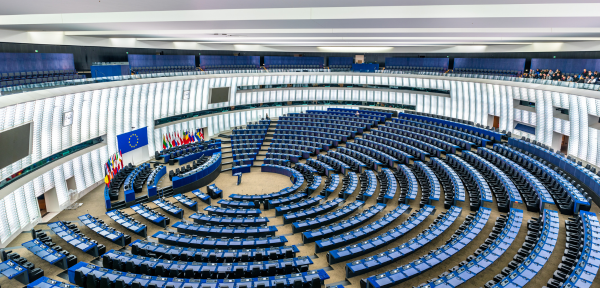What comes next after the EU Parliament elections?

It’s been a month since the European Parliament elections and tomorrow 16 July the first plenary session in Strasbourg will take place. This is the official start of the new legislature and an exciting and crucial time for European democracy!
A total of 720 MEPs (Member of the European Parliament) were chosen by citizens across Europe. The parliament's composition has shifted to the right, although the centrist coalition of the European People's Party (EPP), Socialist Group (S&D) and the liberal centre, Renew, still hold the majority. The EPP remains the first political group with 188 seats, an increase of 12 from the previous mandate, the S&D group is relatively stable, losing just 3 members. Those which lost most seats are Renew with -26 seats, and the Greens losing 18. This corresponded to a substantial rise in far-right parties, bolstered by their success in big countries like France, Italy, and Germany, which in the past mandate were split between the European Conservatives and Reformists (ECR) and Identity and Democracy (ID) groups.
Although the new mandate hasn't officially started, MEPs are already busy. The first plenary will see the official announcement and approval of new political groups that bring together MEPs based on political affinities and must consist of at least 23 MEPs coming from 7 Member States.
Over the last few days internal negotiations, constituent meetings, and the election of group presidents are happening behind the scenes. The main big news is the creation of a new far-right political group, Patriots for Europe. Launched by Victor Orban on 30 June, this group combines former members of ID and others previously unaffiliated. With parties like Ressemblement National, Italian Lega, Vlaams Belang, Vox, and other from Austria, the Netherlands, Czech Republic, Portugal, and Denmark joining forces, they’ve quickly become the third-largest group with an estimated 86 members.
During the first plenary, MEPs will also elect the Parliament's President, currently Roberta Metsola, as well as its Vice-Presidents, and will vote on the President of the Commission. On its side, the EU Council has proposed Ursula Von Der Leyen for a second term on 27 June, alongside António Costa as President of the European Council and Kaja Kallas as High Representative for Foreign Affairs and Security Policy.
Von Der Leyen will need the support of more than half of the European Parliament to be reconfirmed. The vote will happen on 18 July, and it will be with secret ballots. This means that if the groups in the coalition of EPP, S&D and Renew would compactly vote for her, she’d get more than the needed majority, but it is not sure that all MEPs will follow their groups’ instructions. For this reason, Von Der Leyen and her team are busy meeting with political groups and MEPs, including from the Greens and ECR. The support she will gather may come with a cost for the rest of the new mandate, where additional compromises may be needed on big files.
MEPs will also decide on the composition of Parliament’s standing committees and subcommittees. Although the chairs and co-chairs will be appointed later, political groups are currently negotiating the distribution of these key positions.
Stay tuned! We’ll update you in two weeks on the outcomes of the first plenary, where EASPD will join the Social Platform delegation to start meeting with key MEPs.

Irene Bertana, Senior Policy Officer

